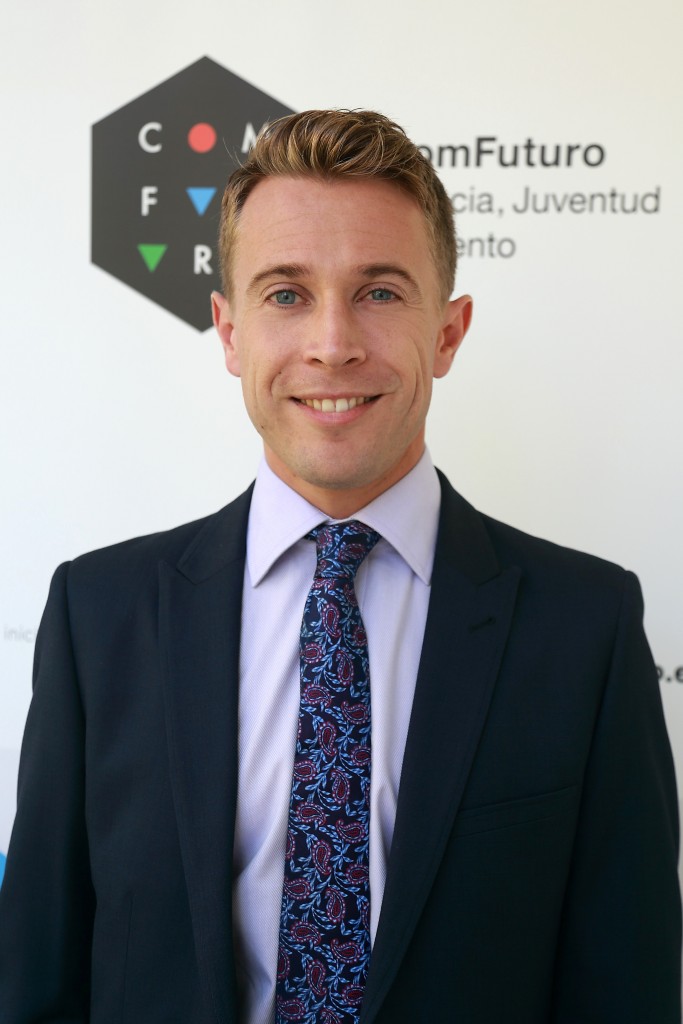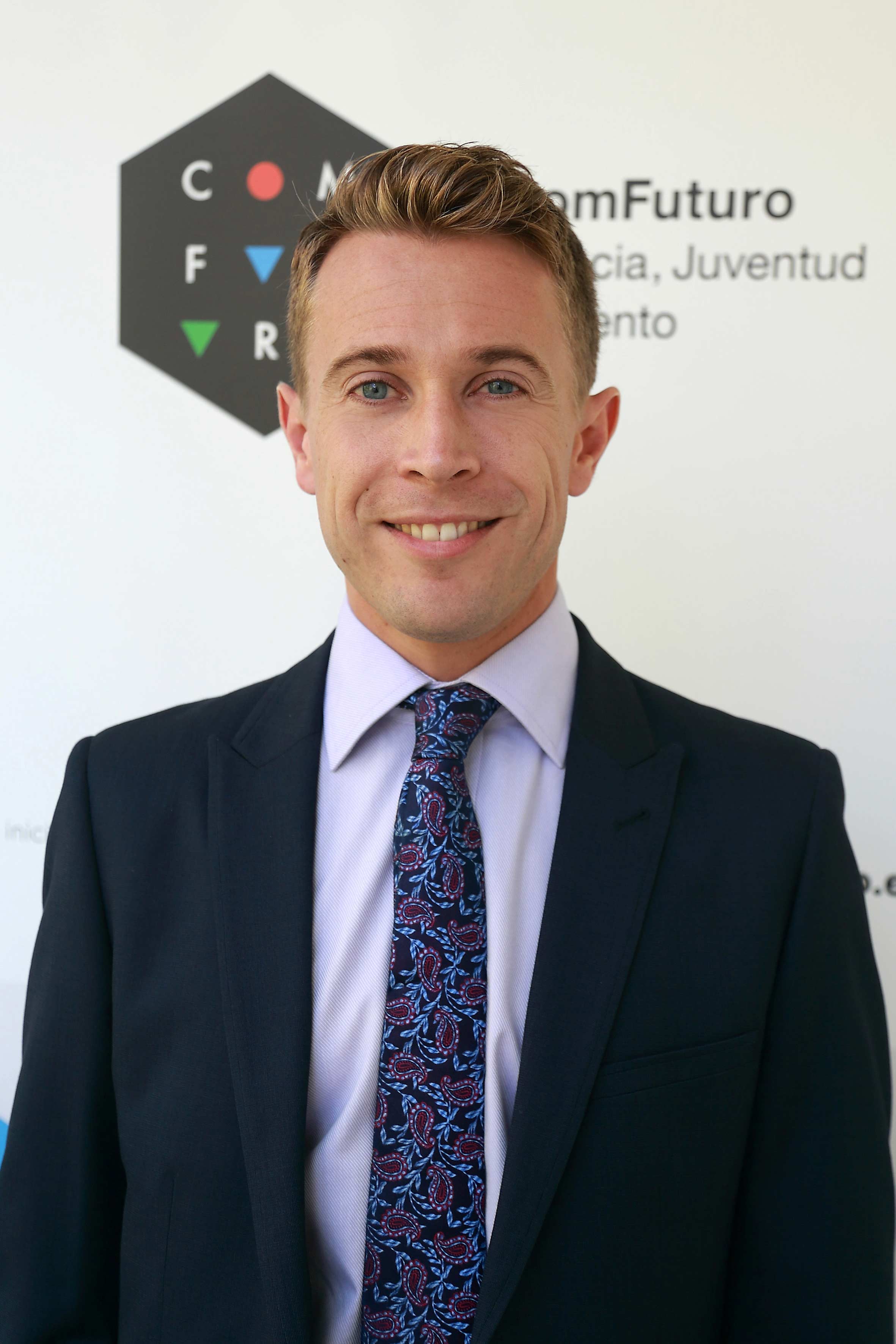
Scott G. Mitchell obtained his master’s degree in Medicinal Chemistry in 2005. He received his PhD from the University of Glasgow (UK) in 2010, where he continued as a post-doctoral researcher until 2011 when he joined the Institute of Nanoscience of Aragon (University of Zaragoza), as a Juan de la Cierva researcher (2011-2013) and later as a Marie Curie researcher (2013-2015). ComFuturo Researcher (I edition) at the Aragón Material Science Institute (CSIC/University of Zaragoza), where he developed his project “Antimicrobial nanomaterials for preserving cultural heritage“.

Project Summary
Project Summary
This project aims to prepare nanohybrid materials with antimicrobial properties and evaluate their capacity to act as biocidal agents to prevent biodeterioration in cultural heritage objects. Microorganisms can grow and induce the decomposition of paper, leather, stone, paints, and textiles and cause serious problems for the conservation of our cultural heritage. The associated health risks, together with the cost of decontamination of infected objects, exhibition rooms, and storage facilities, make this a priority issue for museums, local authorities, and private collectors. Moreover, our shared cultural heritage is a social, economic, and environmental resource for Europe. PEPA will produce modular photosensitive materials based on the combination of three components: nanoparticles, polyoxometalates, and polymeric materials. The ability to modulate each of these components offers a unique opportunity to produce precision biocides that meet the needs of cultural heritage conservation. PEPA has its roots in fundamental synthetic chemistry and will prepare a comprehensive library of tricomponent nanohybrid materials. In addition, PEPA intends to go a step further and test these materials using an antimicrobial functional screening programme to evaluate their activity against common strains of bacteria and fungi found infecting cultural heritage objects. The culmination of the project will open new frontiers in research by evaluating the most effective candidates on paper, leather, and stone surface samples in the laboratory to simulate the use of hybrid materials in the conservation of cultural heritage objects.
Application:
The project combines chemistry, microbiology and cultural heritage. It aims to fuse complex molecules with metal nanoparticles to obtain a selection of hybrid materials with high antimicrobial activity and demonstrate how they can act as biocides to aid the preservation of cultural heritage. That is, to use them to kill bacteria and fungi that contaminate paper, leather and stone surfaces on ancient objects such as books, clothes and statues.
Scientific production derived from the ComFuturo Project
Scientific articles
- Á. Artiga; S. García-Embid; L. De Matteis; S.G. Mitchell; J. M. de la Fuente (2018) Effective in Vitro Photokilling by Cell-Adhesive Gold Nanorods. FRONTIERS IN CHEMISTRY. DOI: 10.3389/fchem.2018.00234
- I. Franco Castillo; L. De Matteis; C. Marquina; E. García Guillén; J. M. de la Fuente; S. G. Mitchell (2018) Protection of 18th century paper using antimicrobial nano-magnesium oxide INTERNATIONAL BIODETERIORATION AND BIODEGRADATION. DOI: 10.1016/j.ibiod.2018.04.004
- S. G. Mitchell; S. Rivera-Fernández; J. M. de la Fuente (2017) Nanomateriales antimicrobianos para la preservación del patrimonio cultural. DOI: https://sede.educacion.gob.es/publiventa/la-ciencia-y-el-arte-vi-ciencias-experimentales-y-conservacion-del-patrimonio/conservacion-restauracion-patrimonio-historico-artistico/21242C
- A.L. Kubo; L. Kreme; S. Herrmann; S. G. Mitchell; O. M. Bondarenko; A. Kahru; C. Streb (2017) Antimicrobial Activity of Polyoxometalate Ionic Liquids against Clinically Relevant Pathogens. CHEMPLUSCHEM. DOI: 10.1002/cplu.201700251
- A. Seliverstov, M. Rangus, M. Hartmann, S.G. Mitchell and C. Streb (2017). Instantaneous formation of polyoxometalate-based cerium vanadium oxide gels. INORGANIC CHEMISTRY FRONTIERS. DOI: 10.1039/C6QI00457A
- S. Herrmann, L. de Matteis, J.M. de la Fuente, S.G. Mitchell, C. Streb (2017). Removal of multiple contaminants from wáter by polyoxometalate-supported ionic liquid phases (POM-SILPs). ANGEWANDTE CHEMIE. DOI: 10.1002/anie.201611072
- G. Alfranca Ramon; A. Artiga Folch; G. Stepien; M. Moros; S.G. Mitchell; J.M. de la Fuente (2016). Gold nanoprism-nanorod face off: comparing the heating efficiency, cellular internalization and thermoablation capacity. NANOMEDICINE. DOI:10.2217/nnm-2016-0257
- I. Maicas Gabas; G. Stepien, M. Moros, S.G. Mitchell; J.M. de la Fuente (2016). In vitro cell cytotoxicity profile and morphological response to polyoxometalatestabilised gold nanoparticles. NEW JOURNAL OF CHEMISTRY. DOI: 10.1039/C5NJ02775F
- Z. Lang, I. Maicas Gabas, X. Lopez, A. Clotet, J.M de la Fuente, S. G. Mitchell; J.M Poblet (2016). On the formation of gold nanoparticles from [AuIIICl4]– and a non-classical reduced polyoxomolybdate as electron source: quantum mechanical modelling and experimental study. NEW JOURNAL OF CHEMISTRY. DOI: 10.1039/C5NJ02773J
- S. Khadempir; A. Ahmadpour; M. Taghi Hamed Mosavian; N. Ashraf; F. F. Bamoharram; R. Fernández-Pacheco; J. M. de la Fuente; S. G. Mitchell (2016) Mechanistic insights into the activation process in electrocatalytic ethanol oxidation by phosphomolybdic acid-stabilised palladium(0) nanoparticles (PdNPs@PMo12). RSC ADVANCES . DOI: 10.1039/C5RA22698H
Works presented at conferences
- S.G. Mitchell. Molecular and hybrid nanomaterials for applications in health and cultural heritage. Journée Equipe F, CNRS. Invited oral presentation. Toulouse, France. 20/09/2018-21/09/2018.
- S.G. Mitchell. Nanomateriales moleculares e híbridos para la prevención del biodeterioro en objetos del patrimonio cultural. 1er Congreso sobre Materiales Multifuncionales para Jóvenes. Oral presentation. Granada, Spain. 02/09/2018-04/09/2018
- A.Franco Castillo; A. Misra; C. González; S. Eyssautier; J. M. de la Fuente; C. Streb; S. G. Mitchell. Molecular and hybrid nanomaterials for applications in health and cultural heritage. International Symposium on metal-Oxo Cluster Sciences: Exploring Novel Possibilities. Invited oral presentation. Tokyo, Japan. 05/08/2018-08/08/2018.
- S.G. Mitchell. Nanomateriales antimicrobianos para prevenir el biodeterio en objetos del patrimonio cultural. XIV JORNADAS TÉCNICAS NANOMATERIALES APLICADOS EN CONSERVACIÓN Y RESTAURACION DE BIENES CULTURALES, Escuela Superior de Conservación y Restauración de Bienes Culturales de Aragón. Invited oral presentation. Huesca, Spain. 10/05/2018-11/05/2018
- S.G. Mitchell; A. Artiga; S. García Embid; L. De Matteis; C. Sánchez; J. M. de la Fuente. Inkjet Printing: A Novel Technology for Microencapsulation of Gold Nanoparticles. International Conference on Coordination Chemistry (ICCC 2018). Invited oral presentation. Sendai, Japan. 29/07/2018-04/08/2018
- S.G. Mitchell. Nanomateriales funcionales para aplicaciones biomédicas. Transfiere, 7º Foro Europeo para la Ciencia, Tecnología e Innovación. Invited oral presentation. Málaga, Spain. 13/02/2018-15/02/2018
- S.G. Mitchell. Preventing biodeterioration with nanostructured materials. Jornadas del ICMA (Universidad de Zaragoza). Invited oral presentation. Huesca, Spain. 05/02/2018-07/02/2018
- S.G. Mitchell. Dissecting the Molecular Mechanism of Apoptosis during Photothermal Therapy using Gold Nanoprisms. 1st Regius Chair in Chemistry Symposium. Invited oral presentation. University of Glasgow, United Kingdom. 25/09/2017-26/09/2017
- C. González; I. Franco Castillo; S. Eyssautier; J.M. de la Fuente; S.G. Mitchell. Superhydrophobic ionic liquids as surface antimicrobial treatments. The 17th International Biodeterioration & Biodegradation Symposium. Oral presentation. Manchester, United Kingdom. 06/09/2017-08/09/2017
- S.G. Mitchell. Hybrid Nanomaterials in Health and Cultural Heritage. Reference Network on Theoretical and Computational Chemistry (XRQTC) ANNUAL MEETING. Invited oral presentation. Tarragona, Spain. 05/07/2017 – 06/07/2017
- S.G. Mitchell. Redox active molecular nanomaterials as antimicrobial agents. 2nd Workshop on “Nanoparticles for biomedical applications”. IMDEA Nanociencia. Invited oral presentation. Madrid, Spain. 26/06/2017
- S.G Mitchell. Antimicrobial nanomaterials for the preservation of cultural heritage. Trinity College Dublin. Invited oral presentation. Dublin, Ireland. 06/12/2016
- S.G. Mitchell. Nanomateriales antimicrobianos para la conservación del patrimonio cultural. VI Ciencia y Arte IPCE. Invited oral presentation. Madrid, Spain. 19/10/2016-21/10/2016
- S.G. Mitchell. Antimicrobial nanomaterials for the preservation of cultural heritage. VI Jornada de Ciencia y Arte. Invited oral presentation. Madrid, Spain. 19/10/2016 – 22/10/2016.
- S.G. Mitchell, L. de Matteis, J.M. de la Fuente. Antimicrobial Capsules Assembled from Polyoxometalates and Chitosan. The ICREA Conference on Functional Nanocontainers. Oral presentation. Tarragona, Spain. 17/10/2016 – 20/10/2016
- S.G. Mitchell, L. de Matteis, J.M. de la Fuente. Antimicrobial nanomaterials for the preservation of cultural heritage. 5th International Conference YOuth in COnservation of CUltural Heritage YOCOCU. Oral presentation. Madrid, Spain. 21/09/2016 – 23/09/2016
- G. Alfranca, A. Artiga, G. Stepien, M. Moros, S.G. Mitchell; J.M. de la Fuente. Gold Nanoprism-Nanorod Face Off: Comparing the heating efficiency, cellular internalisation and thermoablation capacity of gold nanorods and nanoprisms. 6th European Chemistry Congress (EuCheMS). Oral presentation. Seville, Spain. 11/09/2016 – 15/09/2016
- S.G. Mitchell. Nanomateriales antimicrobianos para la preservación del patrimonio cultural. Real Jardín Botánico-CSIC. Invited oral presentation. Madrid, Spain. 03/03/2016.
